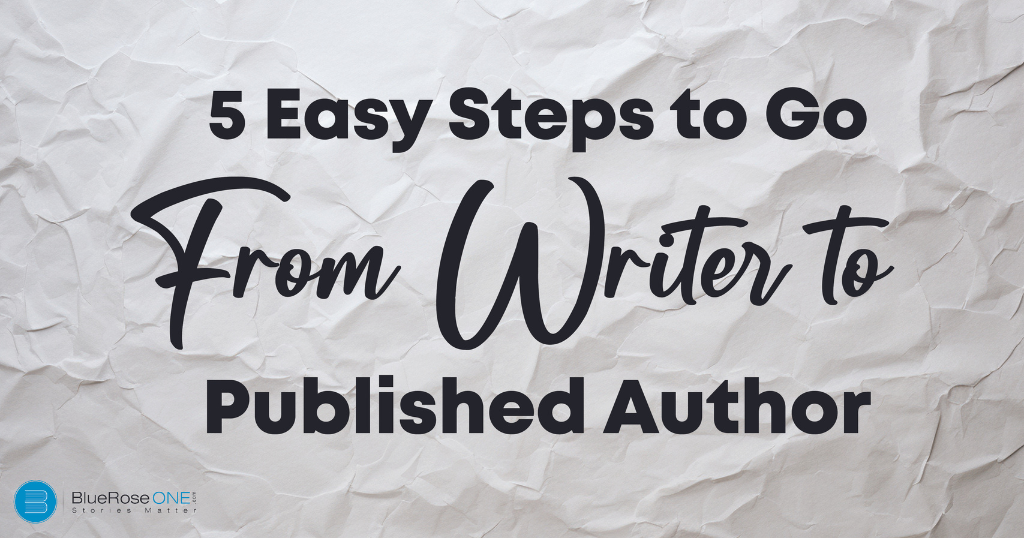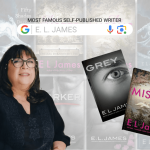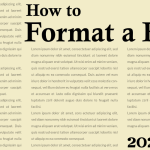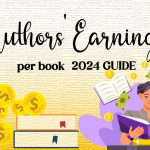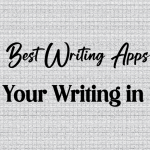Becoming a published author is a dream many writers harbor. Whether you’re penning a novel, a collection of short stories, or a non-fiction masterpiece, the journey from writer to published author can be both thrilling and challenging. In this comprehensive guide, we’ll walk you through five easy steps that can turn your writing aspirations into a reality.
Step 1: Craft Your Manuscript with Care
The foundation of any published work is a well-crafted manuscript. Before diving into the world of publishing, focus on honing your writing skills and creating a compelling piece of work. Consider the following sub-steps:
- A. Set clear writing goals.
Before you start writing, think about what you want to achieve. Do you want to write a big story, a bunch of essays, or maybe a series of short tales? Having clear goals will guide your writing journey. For example, J.K. Rowling’s goal was to create an exciting fantasy novel for young readers. This goal shaped the “Harry Potter” series and her entire writing career. Whether it’s a novel, an essay, or a short story, knowing your goals is like having a map for your writing adventure. Isaac Asimov said it well: “Writing, to be successful, requires singleness of purpose.” - B. Create a writing routine.
Consistency is crucial when you’re writing. Have a regular time set aside for writing each day or week. This routine helps you keep going and make steady progress. Haruki Murakami, a famous author, follows a strict writing routine to produce his many novels. He wakes up early and writes for a set number of hours each day. This disciplined approach keeps his creativity flowing and is essential for any writer navigating the vast world of storytelling. - C. Get Feedback
In the world of writing, getting feedback is like fine-tuning your instruments for a precise journey. Share your work with others to get different perspectives. Feedback helps you improve your manuscript. Margaret Atwood, known for “The Handmaid’s Tale,” actively seeks feedback from trusted individuals. Their insights help her make her stories more impactful. Embracing feedback is not a sign of weakness but shows your dedication to creating a great manuscript that readers will enjoy.
Step 2: Edit and Polish Your Masterpiece
Once your initial draft is complete, the editing phase is crucial for transforming your manuscript into a polished gem. Consider the following steps:
- A. Self-Editing Before sharing your manuscript with others, embark on a self-editing journey. Dive into your writing, hunting for plot holes, inconsistencies, and grammatical errors. Imagine your manuscript as a puzzle, and self-editing is the process of ensuring all the pieces fit together seamlessly. J.K. Rowling, the renowned author of the “Harry Potter” series, emphasises the importance of self-editing. She meticulously reviewed her manuscripts, refining details and ensuring the magical world she created was free from discrepancies. Self-editing is your first line of defence, allowing you to tackle major issues independently before inviting external perspectives.
- B. Professional Editing Once you’ve fine-tuned your manuscript, it’s time to bring in the professionals. Hiring a skilled editor is like having a literary guardian angel. These experts provide a fresh perspective, delving into the intricacies of your writing. They focus on clarity, flow, and overall cohesion, ensuring your manuscript reaches its highest potential. Stephen King, the master of horror, always works with professional editors to enhance the quality of his novels. Professional editing is an investment in the excellence of your work, bringing out the brilliance you might have overlooked.
- C. Beta Reader Feedback After the professional editing stage, reconnect with your beta readers. These are your literary allies, offering fresh eyes and a reader’s perspective. Beta readers can catch any lingering issues and provide valuable insights into the overall reader experience. George R.R. Martin, the author of the “A Song of Ice and Fire” series, values beta reader feedback to refine his epic narratives. Their input helps gauge how well your story resonates with the intended audience, ensuring your manuscript is a captivating journey for readers. Beta reader feedback is the final touch, aligning your work with the expectations of your audience.
You may also like: The Rise of Self-Publishing and What it Means for Authors
Step 3: Choose the Right Publishing Pathway
Now that your manuscript is polished, it’s time to decide how you want to publish your work. Two primary pathways exist: traditional publishing and self-publishing.
- A. Traditional Publishing
Submit to Literary Agents
Traditional publishing often begins with literary agents. Craft a compelling query letter that succinctly introduces your manuscript, highlighting its unique elements. Do thorough research to identify literary agents who specialise in your genre. For instance, J.K. Rowling faced numerous rejections before finding an agent who recognised the magic in “Harry Potter.” If an agent expresses interest, they become your advocate, presenting your work to traditional publishing houses. Their established connections increase their likelihood of securing a publishing deal.
Submit to Publishers
Some authors opt to submit directly to publishers, especially those open to unsolicited manuscripts. Research publishers are known for accepting submissions without agent representation. Ensure you follow each publisher’s submission guidelines meticulously. An example is “The Martian” by Andy Weir, initially self-published but later picked up by a traditional publisher. This showcases the potential for manuscripts to transition from self-publishing to traditional routes. - B. Self-Publishing
Choose a self-publishing platform.
In the digital age, self-publishing platforms offer authors direct access to readers. Amazon Kindle Direct Publishing (KDP), Apple Books, and others provide user-friendly tools. Choose a platform aligned with your goals and target audience. Hugh Howey found success with his self-published series “Wool” on Amazon KDP, eventually leading to a traditional publishing deal. This exemplifies the power of self-publishing platforms to launch successful writing careers.
Formatting and cover design
Once you choose a platform, adhere to its formatting guidelines. Consistency ensures your book looks professional and is easily readable. Additionally, invest in a professional cover design. Your book cover is the first impression readers have. A striking cover, like those of the “A Song of Ice and Fire” series by George R.R. Martin, enhances visibility and entices potential readers. Formatting and cover design are critical elements in the self-publishing journey, influencing your book’s market appeal.
Step 4: Market Your Book Effectively
No matter the publishing route, effective book marketing is essential for reaching your audience. Explore the following strategies:
- A. Build an author platform. Author Website Creating an author website is akin to establishing your online headquarters. It provides a centralised space where readers can learn about you and your work. Include a well-crafted author bio that reflects your writing journey. J.K. Rowling’s website, for instance, not only showcases her books but also features a personal touch, fostering a connection with fans. Social media presence Leveraging social media is pivotal for building an author platform. Platforms like Twitter, Instagram, and Facebook offer direct engagement with readers. Share updates about your writing process and behind-the-scenes moments, and interact with your audience. Neil Gaiman is known for his active presence on Twitter, where he shares insights and connects with a vast reader community.
- B. Pre-Launch Strategies Cover Reveals A cover reveal is a strategic pre-launch tactic to generate excitement. Share snippets or teasers of your book cover across social media platforms. Marie Lu’s “Warcross” cover reveal, accompanied by an engaging caption, created anticipation and discussions among her readership. Email Marketing Building an email list establishes a direct line of communication with interested readers. Send out newsletters with exclusive content, updates, and details about your book launch. Brandon Sanderson utilises email newsletters to keep his audience informed about upcoming releases, creating a sense of community.
- C. Post-Launch Tactics Book Reviews Encouraging readers to leave reviews post-launch is crucial. Positive reviews contribute to your book’s credibility and visibility on platforms like Amazon and Goodreads. The success of Gillian Flynn’s “Gone Girl” is partially attributed to the abundance of positive reader reviews. Virtual Book Tours Organising virtual book tours expands your reach. Collaborate with bloggers, influencers, and fellow authors to showcase your work across various platforms. Celeste Ng’s virtual book tour for “Little Fires Everywhere” allowed her to connect with a diverse audience and generate buzz long after the book’s launch.
You may also like: Top 10 Best Biographies of All Time
Step 5: Embrace the Author's Journey
Becoming a published author is not just about the destination but the entire journey. Embrace the challenges and celebrate the successes.
- A. Navigating Challenges
Handling Rejections
In the realm of traditional publishing, rejection is a universal experience. J.K. Rowling, the acclaimed author of the Harry Potter series, faced numerous rejections before finding a publisher. Each rejection, rather than deterring her, fueled a determination to refine her work. Authors should view rejection as an opportunity for growth. Analyse feedback, make necessary adjustments, and persist in submitting your manuscript. Rowling’s journey exemplifies that rejection doesn’t define an author; perseverance does.
Balancing Responsibilities
The life of an author involves juggling various responsibilities—writing, marketing, and managing daily life. Neil Gaiman, known for his prolific writing career, emphasises the importance of setting realistic expectations. Prioritise tasks, establish a sustainable routine, and recognise that achieving balance is an ongoing process. Gaiman’s ability to produce quality work while maintaining a strong online presence showcases the significance of finding equilibrium in the authorial journey. - B. Celebrating Milestones
First Sale
The first sale of your book marks a monumental milestone in your author journey. Stephen King, a prolific author with numerous bestsellers, vividly remembers the thrill of his first sale—the novel “Carrie.” King’s journey, starting from humble beginnings, underscores the transformative power of that initial sale. Authors should savour this achievement, as it symbolises the realisation of their creative aspirations.
Positive Reviews
Positive reviews are a testament to the impact your writing has on readers. J.R.R. Tolkien’s “The Hobbit” received overwhelmingly positive reviews upon its release. Acknowledge and appreciate these reviews, as they not only validate your efforts but also contribute to building a positive reputation. Tolkien’s legacy demonstrates that celebrating positive feedback fosters a connection between authors and their audience, enhancing the overall authorial experience.
Read: From Couch Potato to Author: A Self-Publishing Journey to Remember
Conclusion: Your Journey as a Published Author
Embarking on the path from writer to published author involves dedication, resilience, and a passion for storytelling. By crafting a compelling manuscript, navigating the publishing landscape, implementing effective marketing strategies, and embracing the author’s journey, you can turn your writing aspirations into a fulfilling reality. Remember, each step contributes to the tapestry of your unique author’s journey. Happy writing!

